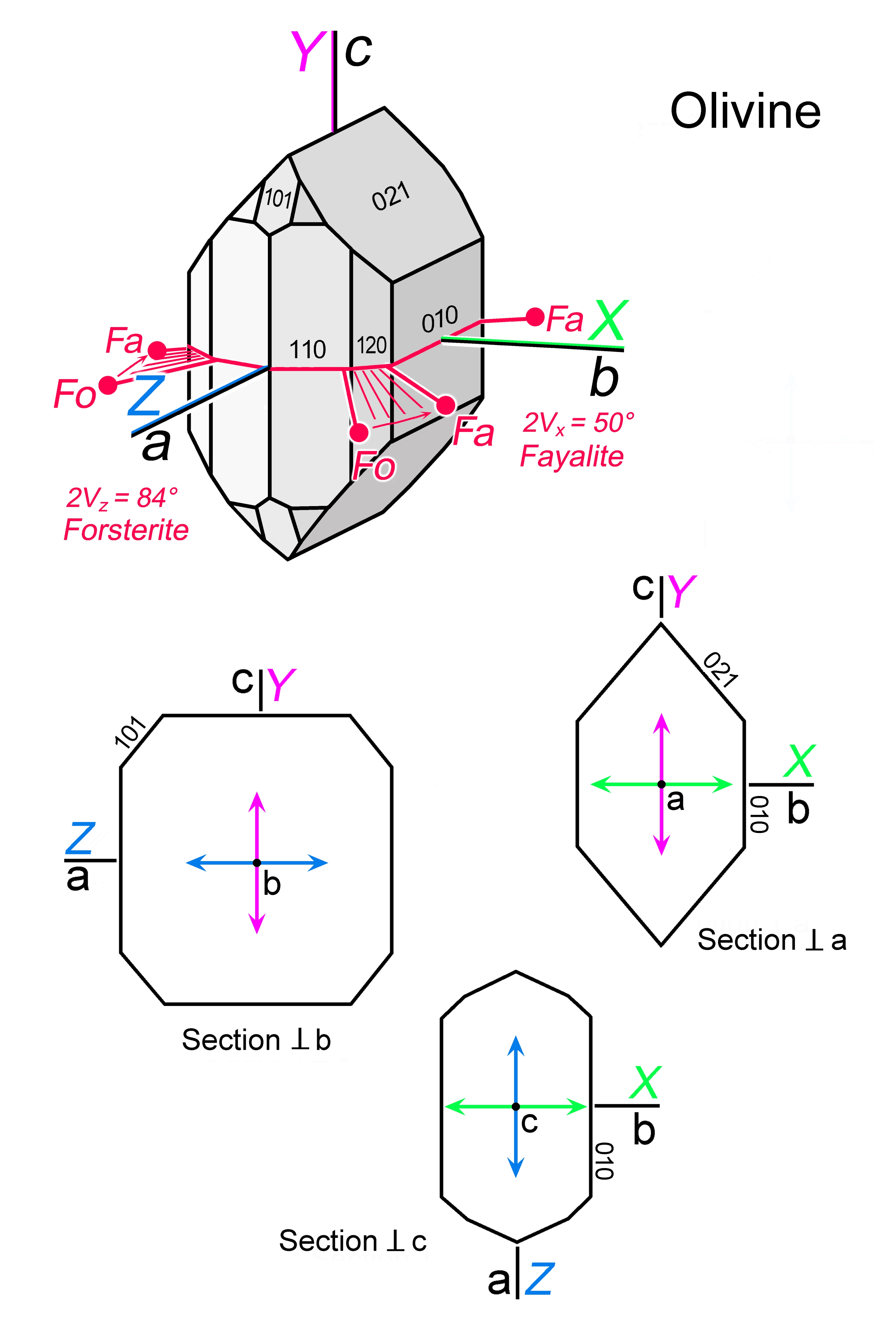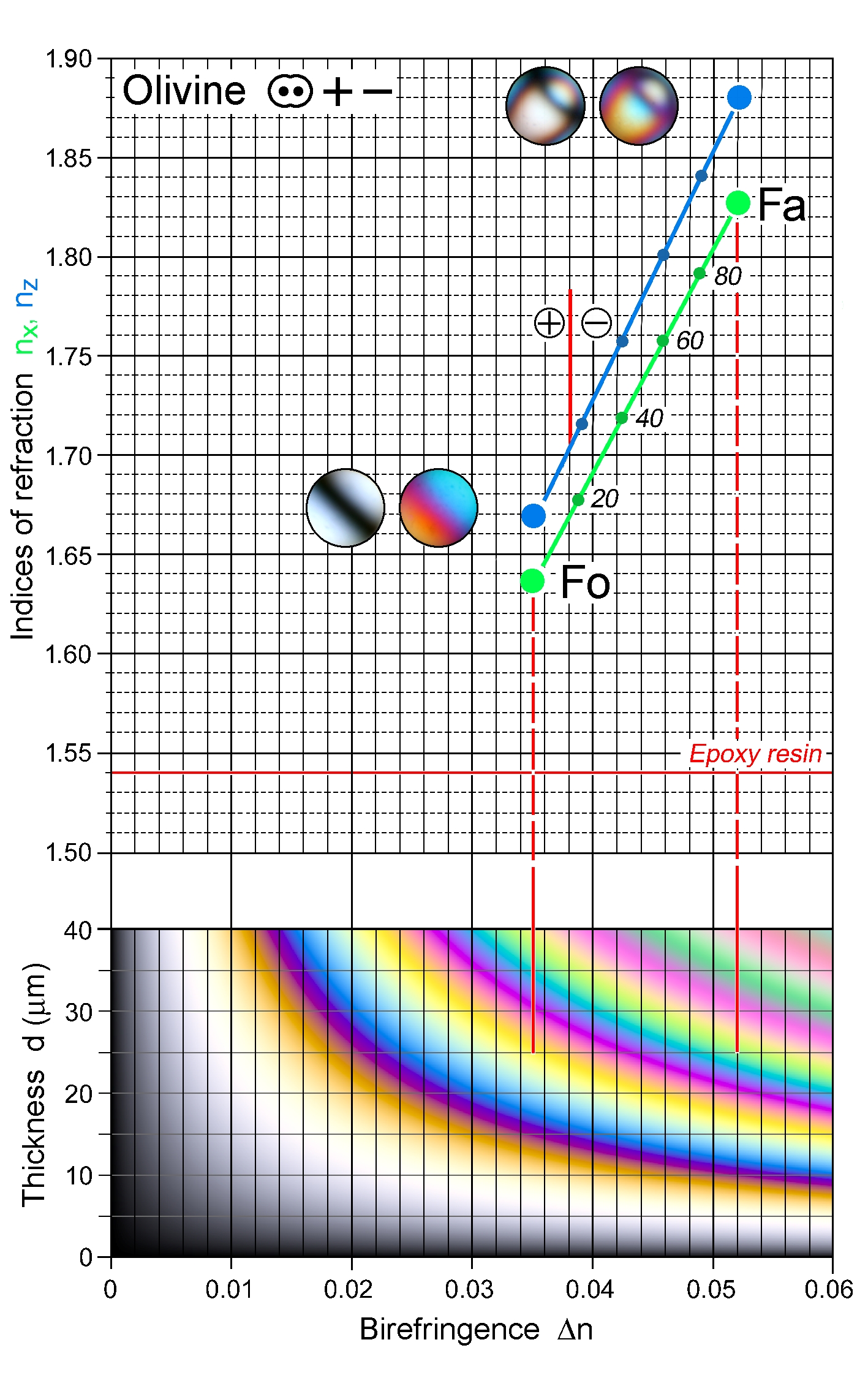|
| Formula | (Mg,Fe)2SiO4 |
| | Optic class & sign | Biaxial positive or negative |
| | Optical orientation | a=Z, b=X, c=Y |
| | Optical plane | (001) |
| | Relief | High to very high |
| | Refractive indices | nx = 1.635 -1.827
|
|
ny = 1.651 -1.869
|
|
nz = 1.670 -1.879
|
|
| n increases with increasing Fe |
| | Birefringence (max.) | 0.035 - 0.052 |
| | | Δn increases with increasing Fe; concentric variation of birefringence reflects Mg-Fe zoning |
| | Optic Angle
| 2Vx
= 46 - 90° |
| | 2Vz
= 90 - 82° |
| | Sign of elongation | Length-slow, l (+), or length-fast, l(-), for crystals elongate in c (=Y) |
| | Interference figure | Common olivine shows large-2V isogyres on brightly coloured isochromes; compositions from Fo0 to Fo85 are optically negative, compositions from Fo85 to Fo100 are optically positive |
| | Colour / pleochroism | Mg-rich: colourless to pale yellow; Fe-rich: lemon-yellow to orange; coloured varieties are pleochroic Y>X=Z; fayalite may be red-brown to nearly black due to oxidation |
| | Zoning | |
|
|
| Form | Habit | Granular; euhedral crystals may show six- or eight-sided cross-sections elongate in c direction; skeletal to feathery in komatiites |
| | | Surface | Anhedral to subhedral; euhedral phenocrysts in mafic volcanic rocks and in cumulates |
| | Cleavage | {010} poor (distinct in fayalite), and {110} poor; irregular fractures are common |
| | Twinning | Not common, but more likely observed in Mg-rich olivine |
| | Extinction | Sections ∥ c: straight to prism faces and symmetrical to {021} faces; basal sections: straight to {010} |
|
|
| Reaction textures | Pyroxene or amphibole ± garnet or spinel reaction coronas; Serpentine ± magnetite as products of hydration under greenschist-facies to sub-metamorphic temperatures, forming typical mesh-textured pseudomorphs |
| | Alteration / decomposition | Very fine-grained mineral mixtures: red- or yellow-brown "iddingsite", or orange to green, isotropic "chlorophaeite" |
|
|
| Occurence | Ign | Mg-rich to intermediate olivine in mafic to ultramafic intrusives and extrusives: olivine basalts, gabbros, norites, cumulates, peridotites, pyroxenites, komatiites; Fe-rich olivine in alkaline intrusive and volcanic rocks |
| | | Met | Forsterite in siliceous-dolomitic marble; fayalite in Fe-rich metasediments |
| | | Sed | Rare occurrences in volcanic-derived beach sands |
| | | Hyd | Fayalite in gas cavities of volcanic rocks |
| | | Other | Stony meteorites |
|
|
| Distinctive properties | Birefringence, relief, fracture pattern, lack of good cleavage, characteristic alteration |
| | Additional comments | |
|
|

 Images
Images 


 Images
Images 
